Travel: Bahrain, the '˜Pearl of the Gulf'
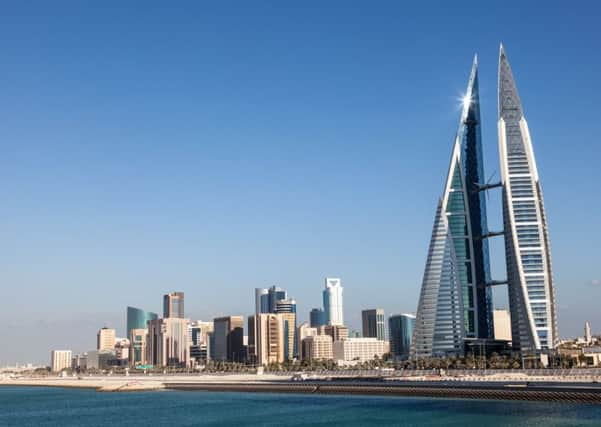

After a seven-hour flight from Heathrow, I arrived at Bahrain International in the early hours, feeling oddly rejuvenated thanks to an exquisite business class experience courtesy of home-grown carriers Gulf Air. Stepping out of the airport, though, it was as if someone had taped a wood-fired kiln to my body. Whatever time of year you choose to visit, pack plenty of sun cream.
From the airport it was a 25-minute car journey to the manmade Amwaj Islands and the hotel of my wildest dreams: the ART Rotana.
Advertisement
Hide AdAdvertisement
Hide AdTastefully modern with a distinct Arabian flavour, ART Rotana boasts a string of first rate dining (and drinking) areas, two pools, an exclusive beach, a palm tree laden marina and a kiddies waterpark, among a plethora of other family-friendly delights.
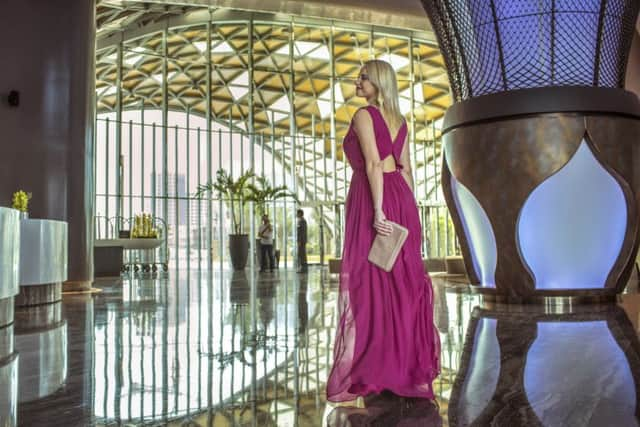

I retired for a couple of hours’ kip in my air-conditioned deluxe room, then headed for my first burst of Bahraini cuisine in Hala Café at Amwaj lagoon. Afterwards I and the party of visitors I arrived with ventured into the capital, Manama, and the Al Fateh Grand Mosque.
Built in 1987, the Al Fateh is one of the largest mosques on Earth, with the capacity to accommodate more than 7,000 worshippers at any one time.
When we visited it was fairly empty, which was fortunate, as hardly anyone was there to point and laugh at the pasty-white Scotsman clad in full Arab thawb (silky white top and trousers compulsory but head dress optional for visitors).
Rather bizarrely, our amiable host, Fadhal, informed us that the mosque’s Islamic-patterned carpet (which, if rolled up, could dam the Tay) was 100 per cent Scottish wool and manufactured in Dundee.
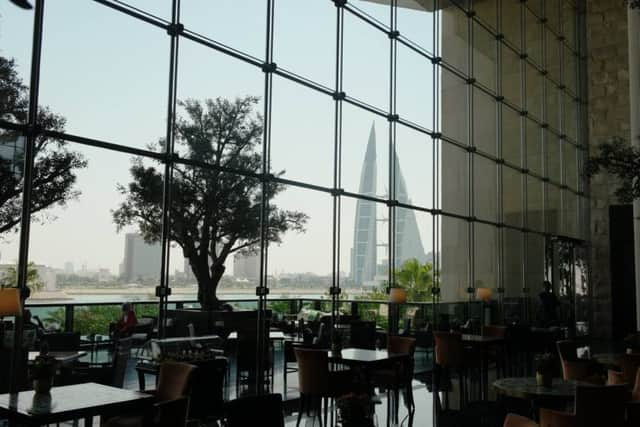

Gulf history is measured in millennia, and at the Bahrain National Museum it’s all on display.
Centuries of plucking pearls from the depths earned it the moniker Pearl of the Gulf, and, in this sphere, it was the envy of the Middle East. Everything changed in 1932 when it became the first Gulf country to strike oil. The focus shifted from polished white pearls to refined black gold, the wealth of which continues to rise out of Manama in the form of gleaming desert skyscrapers.
Come dusk, we headed into Block 338 in trendy Adliya for some medium rare respite at the Meat Co restaurant. Afterwards we tumbled into a Spanish tapas bar called Calexico, where every punter was able to dance the salsa like an absolute machine.
Advertisement
Hide AdAdvertisement
Hide AdBack at the ART Rotana, I went wandering and discovered that the hotel has its own nightclub. A flagon of Stella for five dinars sounded reasonable until I remembered that 1BHD equates to £2.
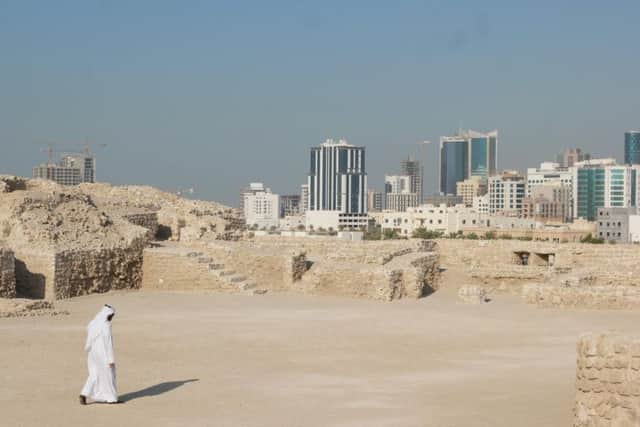

At 8am the following morning, with the temperature at an astounding 37C, we drove back into Manama to enjoy breakfast fit for a sheikh at Haji’s Café. The oldest on the island, it serves local grub in the traditional way and my beans, fried egg and bread were like none I’d ever tasted. Sandwiched somewhere between a naan and a poppadom (as a fellow journo put it) on the baked goods spectrum, Arabic bread is fairly unique.
After breakfast we took a traipse through the Manama souk, the old market, which was just how I imagined an Arabian market would look, sound and smell. The deeper we got, the more authentic the wares seemed to get; plastic toys made in Asia making way for colourful, fresh spices in canvas bags. Nearby was the gold souk, surprisingly busy for a Wednesday morning, and an eye-opener.
After a stop at Shaikh Isa Bin Ali House, a fascinating former royal residence that dates back 200 years, more culture beckoned at Qal’at al-Bahrain, an ancient fort the Portuguese captured, partially flattened and rebuilt several hundred years ago. We also passed by crumbling ruins dating back millennia to Dilmun times. The whole place was abuzz with history.
That night I met up with my cousin and his wife at their family home on the other side of the island – after three years living and working there, they speak highly of the expat life – while the rest of my group enjoyed dinner, cocktails and panoramic views at the Swiss-Café Restaurant in Manama. Meanwhile, I was tucking into steak and lager at the Bahrain Rugby Club, which was so full of lobster-skinned Brits, I could easily have been in Faro.
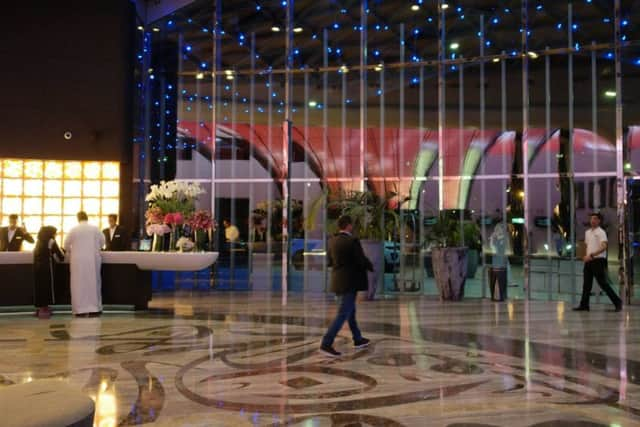

The following morning I bid farewell to my cousin and met up again with my group to head to Beit Al Qur’an (The House of the Qur’an). A multi-purpose complex dedicated to the Islamic arts, it contains some of the earliest versions of the Muslim holy book in existence and was a real treat.
Around midday at the craft industries development centre we got creative and painted on ceramic tiles and were shown how quickly ground palm leaves could be turned into paper, then made a bee-line for Bahrain Bay, where there’s a skyscraper shaped like a drill bit and another like a giant clothes horse. The latter houses the Four Seasons Hotel, which is basically a desert mirage decked out in acres of Carrara marble, Cuban mahogany and featuring food from the critically acclaimed CUT by Wolfgang Puck. There are stunning views from the suites over the Bahraini capital with its cranes and half-finished buildings, reminding you that, like Dubai, Manama is in a state of constant construction. In ten years, it’ll be unrecognisable.
We rounded the day off with a private boat trip for a spot of snorkelling in the cobalt blue waters of the Amwaj Islands, but as one of us unfortunately brushed against a jellyfish, we were soon back at the hotel and enjoying our final dinner at Flames steak and grill.
Advertisement
Hide AdAdvertisement
Hide AdDespite the increasingly high humidity, we were all down about having to leave. Forget the world for a minute, Bahrain is your oyster; it’s just waiting for you to prise it open and discover the brilliant pearls within.
Fact Box:
Gulf Air, the national carrier of the Kingdom of Bahrain, serves 42 cities in 25 countries spanning three continents. It flies twice a day direct from London to Bahrain. Return flights start from £370 including taxes.
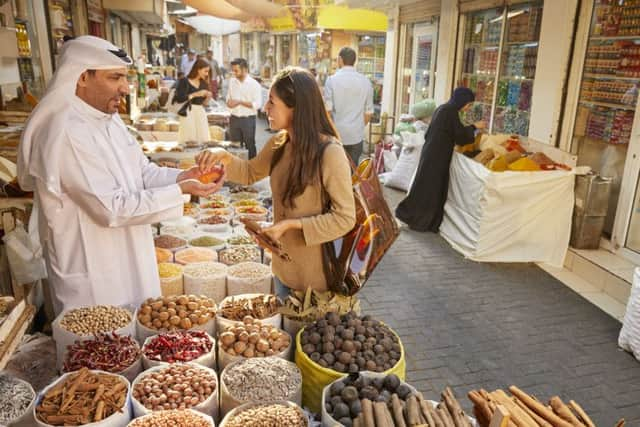

Stay at the five star ART Rotana in Bahrain from BD90 (£182) per room, per night, inclusive of breakfast based on two adults sharing a Classic Room. Visit www.rotana.com.
AtBahrain tours start at £51 per person, subject to availability, tel +973 17100024, at-bahrain.com/daily-guided-tours/ .
For more information on the Kingdom of Bahrain, events and attractions visit: www.btea.bh
Further Information
Flames Steak & Seafood at ART Rotana: meals start at £61 (entrée, main and 1 glass wine) per person, www.rotanatimes.com/artrotana/dining
CUT by Wolfgang Puck: mains from £18pp, www.fourseasons.com/bahrain/dining/restaurants/cut_by_wolfgang_puck/
Swiss Café Restaurant, www.swiss-belhotel.com/en-gb/swiss-belhotel-seef/dining/swiss-cafe-restaurant